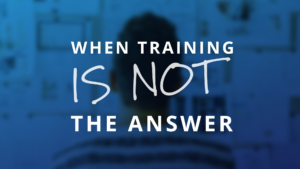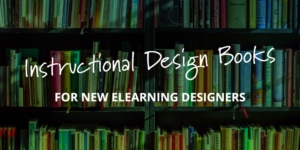
3 Tips for Designing Blended Learning
Any time I start work on a new learning project, someone always asks me how I think the learning content should be delivered. Should it be an eLearning course or instructor-led training? Should it be a how-to video or job aid? And while these questions are important to answer, my response is always the same: Why does it have to be one or the other? Why don’t we try designing blended learning?
Here’s the thing, I’ve always believed that learning isn’t a single event that occurs while seated in a classroom or behind the screen of an eLearning course. Learning is a process of experiences that occur over a period of time. And because of this, I don’t subscribe to the idea that learning is a binary choice between one thing and another. Learning should be a blend of experiences that promotes the four basic elements of learning:
- Knowledge Transfer
- Practice & Application
- Feedback & Evaluation
- Continued Support
In this post, I’d like to share three practical tips you can use when designing blended learning.
Determine What You Will Deliver Before the Primary Learning Event

When designing blended learning, identify what you will deliver before the primary learning event. Prior to your learners heading into the classroom or practicing on the job, what can you provide that will enhance or prepare your learners for that experience?
For example, let’s say we were designing a blended learning strategy for teaching call center agents how to answer the phones. Before the participants attended a hands-on workshop, we could deliver a short video or eLearning course to explain the process and establish the expectations of properly answering the phones. This would act as a primer before the main learning event, where the behaviors are put into practice.
Determine What You Will Deliver During the Primary Learning Event

When designing blended learning, identify what you will deliver during the primary learning event. Usually, I like to reserve the primary learning event as an opportunity for practice and application. This can be done in the classroom, on the job, or even in an eLearning course via a simulation or scenario.
For example, let’s return to our call center example. If we delivered a short eLearning course to outline the behaviors and expectations for answering the phones, then we should use the primary learning event to put those skills into practice. Because we delivered the knowledge transfer prior to the main learning event, this lets us focus 100% on practice, application, and feedback.
Determine What You Will Deliver After the Primary Learning Event

When designing blended learning, identify what you will deliver after the primary learning event. After your participants have attended or received the main learning deliverable(s), it doesn’t mean the learning is complete. What can you provide to help continue the learning process? This is where performance support and continued feedback come into play.
For example, after our participants have completed the hands-on workshop, where they practiced answering the phones, continued support can be provided with a job aid that reinforces the desired behaviors. Continued support can also be provided with ongoing coaching and feedback from the participants’ leader.
The Bottom Line
Designing blended learning doesn’t mean you need to overly complicate your learning strategy—it’s simply an acknowledgment that learning doesn’t occur in a singular event. So, the next time you’re asked whether something should be an eLearning course or instructor-led training, try exploring the unbeaten path of blended learning.
What tips can you share for designing blended learning? Share them by commenting below!




Hey Tim,
thanks for the article, it helped confirm that i was not crazy when i suggested a blended approach to my SME during my last project. they were hesitant at first thinking they knew better and knew what they wanted – “I want a 15 minute e learning course before they attend a 4 hour in person training”. once I dig deeper at what they really wanted, I took a chance , drafted a mock up to show them what an introductory video would look like – kind of creating excitement before the actual in person training (just like you suggested above with “establish the expectations”). They loved it! they did not know that a video could be used to that purpose. Then created the 4 -hour ILT and an AST to follow up and measure the participant’s knowledge of the topic.
Again thanks!
Hey Nadyme! Thanks for sharing! I’m so happy you found my post helpful! I’m also glad you were able to convince your stakeholders to go in a different direction! That’s great!